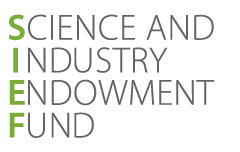Automated Farm Provenance
SIEF supports technologies advancing food supply chain data provenance, trust and compliance
The challenge
The increasing demand for robust supply chains that delivers food that global consumers can trace, and trust is well-recognised. Maintaining and boosting Australia’s high-value food export markets where premiums are paid for quality, safety and provenance will require more mature digital solutions and the key to success will likely be integrity systems that are simple to use, easy to interact with and run automatically in the background. They will not require data to be manually recorded or entered into central databases and results will be automatically captured and verified based on algorithms and advanced technology.
The response
The overall objective of this project was to validate provenance claims at the start of the supply chain through automating data collection and analysis using sensors and devices on animals and on-farm. Using the Australian red-meat industry as a test case the project aimed to develop a system that provides trustable, immutable, and auditable evidence of compliance with industry regulations and guidelines that allow producers to automatically verify compliance and replacing manual checks and reducing regulatory burden.
The Science and Industry Endowment Fund has supported the development of this work through the funding of $2.4M during the calendar year of 2020. The CSIRO project team state that without SIEF’s support they would not have been able to advance the underpinning science with a focused use case or achieve integration of developed technologies.
The CSIRO team developed a novel Automated Farm Provenance System. This required the codification of animal welfare standards and guidelines into compliance rules, animal behaviour data collection and design and simulation of data architecture for networks of IoT devices. The team designed a machine learning classifier and logic/rule engine, animal welfare metrics and identified cybersecurity vulnerabilities and conducted an end-to-end cybersecurity audit.
In December 2020, the Automated Farm Provenance System architecture was presented virtually to red-meat industry stakeholders, including progress on a new multi-agent farm data simulator created by the team in lieu of live farm demonstrations due to the COVID-19 pandemic.
Outputs
The key output of the investment is the proof-of-concept demonstration of the Automated Farm Provenance System. An integrated suite of novel technologies that
- provides data provenance by storing data across multiple gateways employing a private Ethereum IoT Edge blockchain and replicating to the cloud to ensure data is immutable
- provides a data trust engine that calculates reputation and trust on the data obtained from the device by cross validating with data from multi modal sources of data and verifiable data from the private on-farm blockchain
- automates compliance by employing logic and rules to automatically determine compliance against welfare standards – based on data collected from the smart ear tags, cloud sensor data stream.
In addition, the team produced:
- a prototype of a novel ‘Massive Multi Agent Simulator’ for the running of scenarios to test and integrate components of the system
- cybersecurity and auditing mechanisms
- “Vision-based annotation” technology that identifies and classifies cattle behaviours
- high-resolution herd dynamics and fine grain tracking technology for animal social and welfare metrics
Outcomes
The key legacy of the SIEF investment is the delivery of intellectual property, new research knowledge and human capability and skills into the ongoing R&D of future:
- automated compliance and data trust tools for food supply chains
- automated animal welfare monitoring systems
- virtual animal behaviour simulation modelling
- vision-based cattle behaviour classification
The development and demonstration of the Automated Farm Provenance System as a ‘proof of concept’ has successfully merged a number of advanced digital technologies for data provenance, trust and automation simultaneously. Since the SIEF investment, three strategically funded CSIRO investments will leverage this advancement in underpinning science.
The engagement and demonstration to industry in December 2020 has also opened up new potential research collaborations and engagements between CSIRO and industry for the application of further digital solutions in animal monitoring and automated audit and compliance.
Impacts
Pending future success and translation of the follow-on R&D projects, the SIEF investment is likely to contribute broadly to a number of triple bottom line impacts. Impact is likely to eventuate first in the Australian red meat industry supply chain as the focus test case for follow-on projects and later in the horticultural industries and other food supply chains.
Possible economic impacts
- Reduced regulatory burden throughout the Australian food supply chain
- Maintenance of Australian export price premiums and market access
- Industry license to operate and sustainability maintained
- Animal welfare accurately monitored and accountable
- Improved animal welfare due to possible reduced need for live animal experiments
Possible social impacts
- Facilitation of trust in food systems and supply chains
- Productive human capital developed in new smart supply chain systems
SIEF’s Role
The SIEF funding enabled:
- Bringing together of multidisciplinary researchers and technologies at various stages of development. This allowed the further development and federation of these technologies into a novel system.
- The research team to engage with industry and virtually demonstrate this proof of concept. This has opened up new potential research collaboration opportunities between CSIRO and industry.
- Production of new intellectual property and underpinning human capability and skills that will be leveraged through new CSIRO strategically funded projects for future supply chain integrity digital solutions.
- Researchers to better identify the value proposition of their technologies, re-evaluate who the end-users are likely to be in the near term and pivot the research objectives and approach accordingly for maximum prospective impact.
Future Work
The funding and support from collaborators has been valuable in completing the proof-of-concept stage and developing a prototype system. The ultimate success of this work is heavily dependent upon research progress beyond this stage for successful translation and commercialisation of this work into food supply chains.
